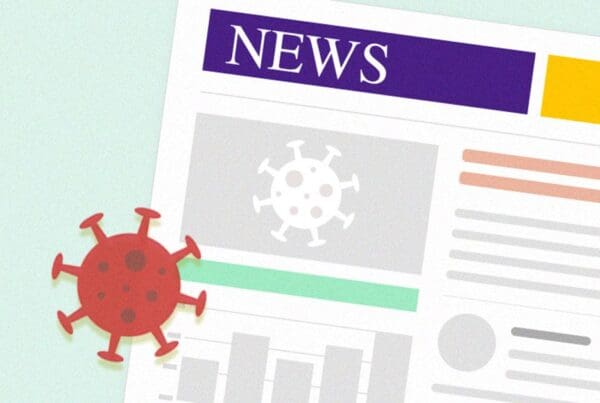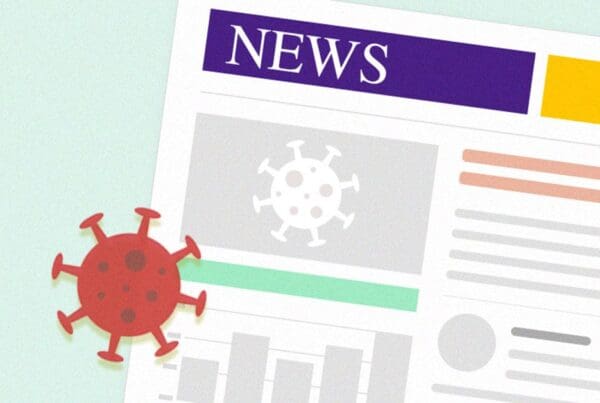Quick Read:
- Metrics for COVID-19, influenza and RSV in King County are currently below the thresholds that will trigger required masking in clinical spaces.
- You can follow the metrics for determining when masking will be required on the Public Health — Seattle & King County dashboard.
With the transition to fall and more time spent indoors, we saw COVID-19 cases increase in our community and in clinics and hospitals. Over the last month, the number of hospitalizations in King County more than doubled from the summer level of 1.2 per 100,000 to 4.2 per 100,000. This is consistent with increases in hospitalizations seen across the U.S. (see COVID Data Tracker). Fortunately, the most recent data indicate a plateau and maybe even a slight decline in cases and hospitalizations. At the same time, the trajectory of the respiratory virus season continues to be very difficult to predict.
The Future of Masking in Clinical Spaces: Over the last three years, we learned a lot about how masking can reduce respiratory virus infections in hospitals and clinics. When we discontinued the requirement to mask in most of our clinical spaces earlier this year, we indicated that masking was likely to resume during the respiratory virus season. We also began working with other healthcare system partners, public health agencies, and the Northwest Healthcare Response Network to identify what data we could use that would indicate the start of the respiratory virus season and a return to masking in patient care spaces.
For re-initiating healthcare worker masking in clinical spaces, we determined that the most dependable metrics are emergency department diagnoses due to COVID-19, influenza and RSV. These data are collected from all emergency departments through a system called the Electronic Surveillance System for the Early Notification of Community-Based Epidemics (ESSENCE). Public Health — Seattle & King County began reporting these data for King County on Sept. 6 with alert thresholds that indicate a substantial risk for the specific virus in the community.
When any one of these viruses is diagnosed at a rate above the alert threshold, we will move to required healthcare worker masking, and required masking will continue until all three viruses are below the respective alert thresholds for at least a period of two weeks. For more information, please see the Northwest Healthcare Response Network website and the declaration on masking signed by UW Medicine along with other area healthcare systems and our public health partners.
Regardless of where we are with these specific viruses, routine masking while indoors continues to be strongly recommended in all UW Medicine facilities.
What Will Be Required When One or More Viruses Crosses the Epidemic Threshold?
All healthcare workers will be required to wear the highest level of respiratory protection that they can wear comfortably whenever in a patient care space (such as a clinic, inpatient unit, radiology unit or emergency department). At a minimum, this means using a surgical mask that covers the nose and mouth completely. When choosing a mask, you should wear the highest-level respiratory protection that you can tolerate. For example, a fitted N95 provides more protection than a surgical mask.
Free COVID-19 Test Kits: In case you did not see the announcement, you can get four free COVID-19 tests sent to your home. With so much COVID-19 circulating, please remember to test whenever you have a fever, sore throat, runny nose, loss of taste or smell, or similar symptoms. If you have been around another person with COVID-19, you should also test yourself after five days. For the safety of others, it’s still a good idea to test yourself once or twice before gathering with other people, especially if the group includes people at risk of severe disease and/or people who are not up to date with COVID-19 vaccinations.
We will keep you informed as we learn more about the current respiratory virus season.
Sincerely,
UW Medicine Employee Health and Infection Prevention & Control Teams

